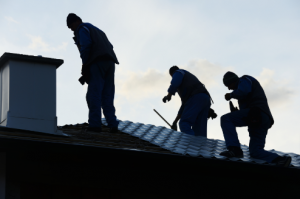Gutters 101 What Are Downspouts and Why Are They Important
In this comprehensive guide, we explore the critical role of downspouts in gutter systems, their functionality, and their impact on home maintenance. Downspouts are often overlooked but are essential components in managing rainwater and protecting your home from water damage. Understanding their role and maintaining them properly can save homeowners significant repair costs and prolong the life of their homes.
What Is a Downspout and How Does It Work?
A downspout is a pipe that carries rainwater from a gutter down to a designated drainage area. Its primary purpose is to redirect water away from the foundation of a structure to prevent damage.
Downspouts play a pivotal role in gutter systems by efficiently managing the flow of water collected from roofs during rainfall.
Without properly functioning downspouts, water can accumulate around the foundation, leading to potential structural issues. These pipes are essential components in ensuring water is channeled correctly and mitigating risks associated with excessive water exposure. Downspouts, therefore, serve as the final step in the gutter system’s process, moving water safely away from your home.
In addition to their foundational purpose, downspouts are designed to facilitate drainage in a controlled manner. This control prevents soil erosion and landscape damage caused by uncontrolled water flow. Thus, downspouts are critical to maintaining both the aesthetic and structural integrity of a property.
At a fundamental level, a downspout is connected to the gutter system to transport rainwater from the roof to the ground level. As rainwater is collected by the gutters, it flows into the downspouts and is directed away from the foundation of the building. This system relies on gravitational force to ensure that water is consistently moved through the downspout and discharged at a safe distance from the structure.
Why Are Downspouts Important for Home Maintenance?
One of the most critical roles of downspouts is to prevent foundation damage by controlling water flow away from the home. Excessive water collection around a home’s foundation can lead to major structural issues like cracking or shifting. Properly installed and maintained downspouts are therefore essential in ensuring excess water is swiftly moved away from these sensitive areas.
Without this system in place, homes can experience water seepage, which may weaken the foundation and create an unstable structure. The cost of foundation repair can be substantial, making preventive measures like maintaining downspouts an essential part of home upkeep. Downspouts reduce the risk of expensive repair bills, preserving the overall value of the property.
Crawl spaces, in particular, can be vulnerable to dampness when downspouts are not working properly. The accumulation of water in these areas not only threatens the structure but also creates an unhealthy living environment. Maintaining downspouts helps ensure basement and crawl spaces remain dry and free of mold-promoting moisture.
Routine checks can identify potential incursions of water, allowing homeowners to adjust systems accordingly before significant issues emerge. With the right maintenance practices in place, homeowners can preserve the integrity of their crawl spaces and basements for years to come. By preventing moisture buildup, downspouts also contribute to reducing odors and pest infestations often attracted by damp environments.
How to Maintain and Clean Your Downspouts?
Regular inspection and maintenance of downspouts are critical steps in ensuring they function effectively. Homeowners should schedule a routine check, particularly before and after heavy rainfall seasons, to identify and address any potential issues. This entails visually examining downspouts for signs of wear, blockages, or detachment from the gutter system.
Cleaning out any accumulated debris like leaves, twigs, and dirt can greatly improve downspout efficiency. It is advisable to perform this maintenance at least twice a year or more, depending on the environment and weather conditions. Rust detection is particularly crucial for metal downspouts, necessitating prompt attention to prevent deterioration.
As part of the maintenance process, homeowners should ensure all screws and brackets are secure to prevent the downspouts from loosening over time. Regular maintenance not only extends the life of the downspouts but also secures their ability to protect your home. Prioritizing the health of downspouts can result in long-term cost savings and reduced risk of emergency repair situations.
Cleaning downspouts is a straightforward task that can be performed with a few essential tools. Begin by using a ladder to access the top of the downspout and remove any visible debris. A high-pressure hose can then be inserted to flush out any remaining blockages within the pipe.
If necessary, a professional service can be enlisted to perform a more thorough clean, particularly if the homeowners are uncomfortable with the process. Getting expert help can securely remove debris without damaging the system, ensuring optimal performance. Regular cleaning is a key preventive measure to maintain downspout usefulness and effectiveness over time.
Downspouts serve as a crucial component in effectively directing rainwater away from home structures to prevent damage. By understanding their role and ensuring proper maintenance, homeowners can significantly reduce the risk of costly repairs. Prioritizing regular maintenance checks and swiftly addressing any issues will ensure downspouts protect the home for years to come.










